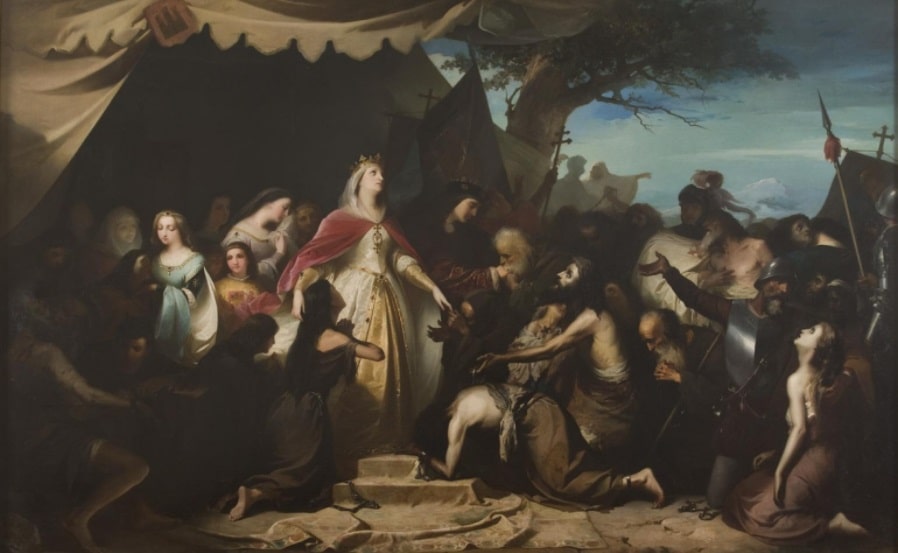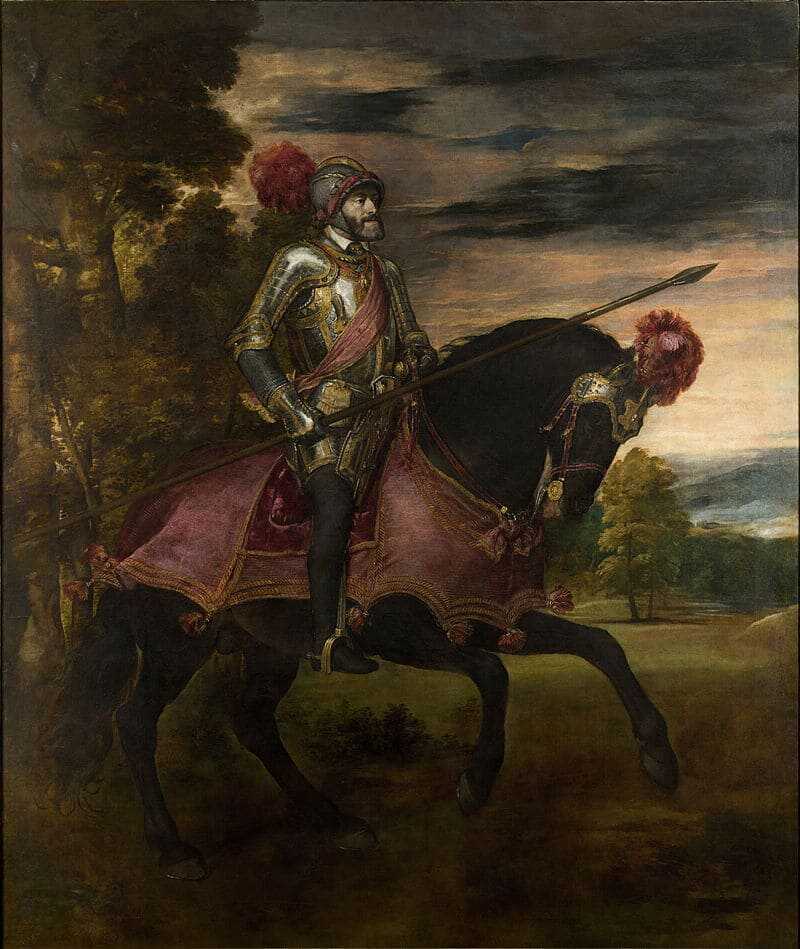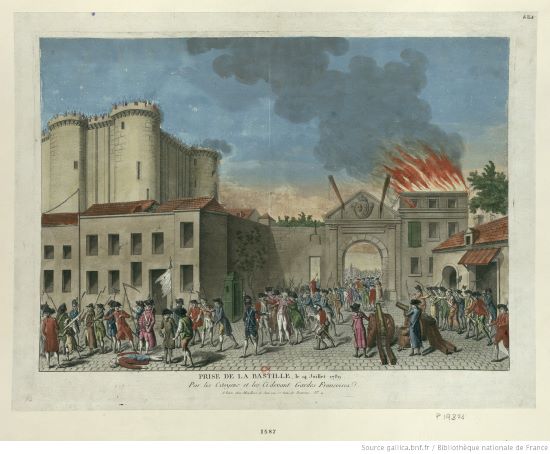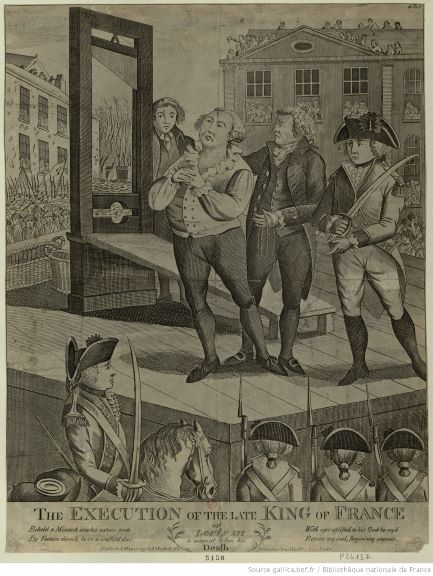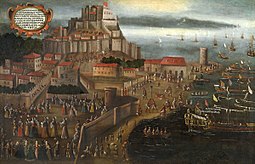The Catholic Monarchs receive the Christian captives after the capture of Malaga, coinciding with one of the final chapters of the peninsular conquest. Painting by Eduardo Cano de la Peña in 1867. Seville Museum of Fine Arts.
Images
Portrait of Charles V by Titian in 1548. Museo Nacional del Prado.
Photograph at London Zoo from the Photographic Club members’ 1855 photograph album.
The resource depicts a representation of the battle of Almansa fought in 1707 in the context of the War of the Spanish Succession. The painting dates from 1709 and was painted by Filippo Pallotta and Buonaventura Ligli. The work is in the Museo del Prado
The illustration shows a recent graduate of the University of London, dressed in academic dress, standing in front of a room of books and holding a human skull in her hand
The image shows the storming of the Bastille, which took place in Paris on 14 July 1789. Its fall at the hands of the Parisian revolutionaries symbolically marked the fall of the Ancien Régime and the beginning of the French Revolution.
Photographs of workers at the construction of the British Museum station on the London Underground in 1898.
The image shows the moments before the execution of the last king of France, Louis XVI. The king can be seen in the centre of the image with the guillotine behind him and a pleading gesture.
Expulsion of the Moors in the port of Denia, a work by Vicente Mostré.
The image shows a view of the almadraba of Zahara de los Atunes (Cádiz) from land. In the past, tuna traps were an important part of the fishery and offered high economic returns to whoever was in charge of their exploitation. The catches could be kept salted and marketed far from their place of origin.


